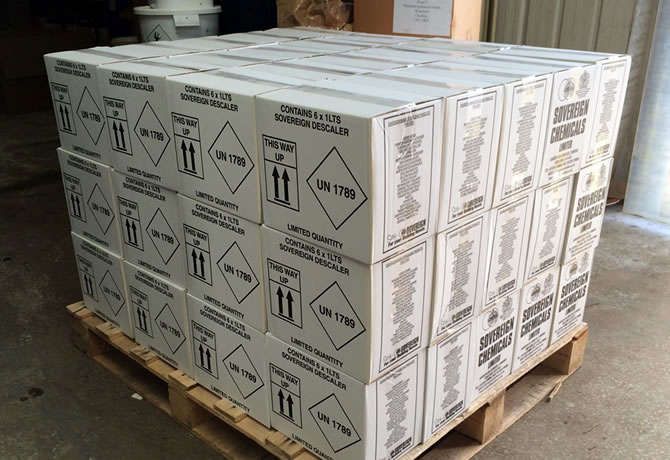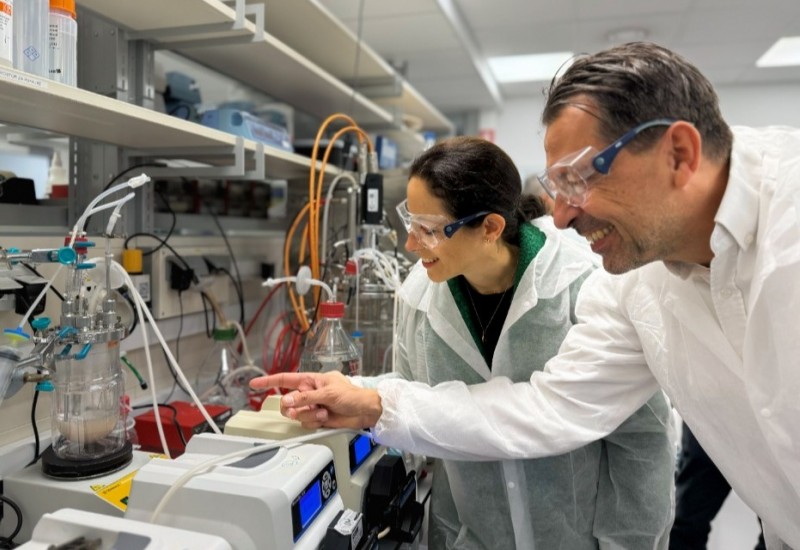Feature article - Chemical packaging: The importance of safe containers
Ben Beattie of Forbeats discusses the challenges that using chemical containers poses to companies and explore the best approaches to ensuring safety
Many industries often need to re-pack chemicals into smaller amounts. This means moving them from a large container to several smaller ones. When this happens, it is crucial that every smaller container is as safe as the large one. T
his is a vital responsibility that everyone in the chemical industry must take seriously from production all the way to the end user, as any mistake can affect product quality, lead to financial losses and pose serious safety risks. Chemical toll processing companies, like Forbeats, specialise in handling these types of operations, having the ability to operate at scale and with any and all packaging or container sizes.
A framework of global and local regulations underpins the task of ensuring chemical safety, especially during transport. At the forefront are the United Nations Recommendations on the Transport of Dangerous Goods. These guidelines, adopted by numerous countries, set forth comprehensive criteria on how hazardous materials should be packed, labelled and transported.
The rules determine the type of vessel suitable for each material, be it paper and plastic sacks, FIBCs, pails or tubs, and they outline how these containers should be labelled, palletised and readied for their journey. Even processes such as the correct clean-down of bulk tankers are outlined to ensure no residue compromises the next shipment.
These regulations represent a global consensus on ensuring the safety and efficacy of chemical transport. For industry players, aligning with them is not just about compliance or best practice; it is about upholding a commitment to safety, quality and global collaboration.
Engaging with handlers
The complexity of chemical management and the risks involved mean there is no substitute for experience. Experienced handlers have a comprehensive understanding of chemicals, industrial processes, storage and transportation that enables them to anticipate and mitigate risks in real-time.
In addition, they are adept at navigating the multifaceted raft of regulations, such as the varying classifications of UN X, Y and Z packages, each of which is tailored to the degree of danger the chemicals pose. Their familiarity with guidelines and procedures ensures a smooth operational flow, reducing potential hiccups that can cause significant disruptions.
Working in partnership with a seasoned chemical handler is also advantageous from a commercial perspective. Compliance is not merely about avoiding penalties; it also ensures the efficient use of resources, maximising product quality and minimising waste.
Experienced handlers can also offer insights into optimising packaging processes, potentially identifying cost-saving opportunities while maintaining safety standards. Last, but certainly not least, when unforeseen challenges arise, as they inevitably do in any complex process, experienced handlers are better positioned to find effective solutions. Their breadth of knowledge equips them with a versatile problem-solving toolkit, enabling them to address issues quickly and with minimal disruption.
Wider considerations
While container size and material are vital when it comes to packing and repacking, there are other important factors to consider. As some chemicals can be corrosive, flammable or reactive, the container material must be both resistant to the chemical it holds and capable of containing any unexpected reactions without compromise. Regulations must be followed to ensure safe materials are chosen and that containers are correctly treated, sealed, labelled and handled.
Labels play a crucial role in safety, informing handlers of potential risks and the necessary precautions to take. A mislabelled chemical container can lead to severe accidents, especially if the chemical is mistakenly used in an incompatible setting or combined with unsuitable substances.
Beyond its material composition, the physical design of the packaging is also of significant importance. Features that make containers easier to handle, stack or transport can minimise the risk of accidental spills or exposures. Ergonomic designs that fit securely on pallets or containers that are structurally sound to prevent tipping can make a world of difference in everyday handling scenarios.
In the broader context of supply chain management and logistics, the shape and design of packaging can influence storage costs, transport logistics and the environmental footprint of shipping. An optimally packed pallet requires fewer trips, reducing both costs and carbon emissions.
Benefits of custom packaging
Given their hugely diverse nature, chemicals sometimes pose unique challenges that off-the-shelf packaging solutions cannot adequately address. This is where custom packaging can provide the greatest value, providing a tailored solution designed to meet specific requirements, while ensuring safety, compliance and optimal handling. Firstly, custom packaging offers precision.
For chemicals with highly specific storage needs, for example, UV protection, moisture control or pressure regulation, custom solutions can incorporate features that address these needs head-on. Such precision not only ensures the integrity of the chemical but also prolongs its shelf life.
Then there is the matter of transport and distribution. Chemicals are shipped across the world and can encounter a range of transportation modes and conditions on their journeys. Custom packaging can be designed to fit seamlessly within standard shipping containers, maximising space utilisation and minimising movement during transit. This is particularly beneficial for delicate or reactive chemicals that require stability. As a result, there is reduced risk of spillage or contamination and, consequently, less product wastage.
Moreover, custom packaging can incorporate innovative safety features. This ranges from tamper-evident seals, ensuring product integrity, to advanced locking mechanisms that prevent unauthorised access—particularly vital for hazardous materials. Custom packaging also provides an opportunity to incorporate eco-friendly materials and designs. This not only reduces the environmental footprint but can also resonate with increasingly eco-conscious customers and stakeholders. Custom design can even extend to branding and aesthetics.
Overall, in the highly complex world of chemicals, ensuring that materials are packed and repacked with precision is not just a logistical consideration but also a safety imperative. While the myriad of guidelines may seem daunting, enlisting the expertise of seasoned chemical handlers ensures compliance and efficiency. Furthermore, investing in custom packaging solutions both helps meet regulatory obligations and provides solutions to improve transport and distribution.
Contact:
Ben Beattie,
Manager
Forbeats +44 (0) 7818 654 789
https://forbeats.co.uk/















